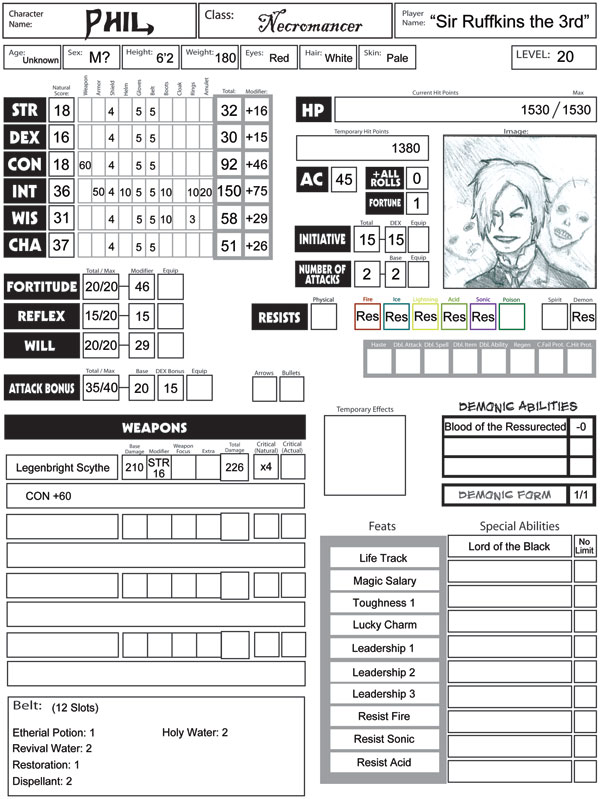Notes:
Let's talk about "Number of Attacks." It's pretty self explanatory and basically works the same way as DND 3.5: as you level up, your base number of attacks increases. This allows you to make multiple attacks in the same turn. This sounds good at first, but in practice it's kind of a terrible idea as all it does is make the player roll more and do more math, which makes turns take longer. And with our high damage number the math took even longer.
So, I changed the way this worked by adding something called "combo attack." This started out as a feat that everyone was pretty much expected to have, and eventually just became a natural part of our game rules. Basically it means that if you have 3 attacks, instead of rolling 3 times you just roll once, and that roll decides if all your attacks hit or not. So essentially having 3 attacks just means you do triple damage. This is quite different from regular DND as extra attacks are supposed to be at a penalty, but frankly I think that's a horrible idea because of all the extra time-wasting math. It's better to just have characters do a lot more damage, it adds a better sense of progression and balance issues aren't really a concern because I can always make up new monsters with a lot more HP to keep things feeling balanced.
"Resists" started out working like they do DND: they were flat damage reduction numbers. For example, you might have a ring that gave you 10 resistance against fire, in that case you'd subtract -10 from all fire damage. However, I don't really like that system because of the extra math, so eventually I changed it to work in a more simple way: resistance just means you take half damage from that element. Elemental damage always comes in the form of large whole numbers, so cutting them in half is quite easy and made the battles go faster. However since having half resistance to an element is pretty powerful, most of the players didn't get multiple resistances until the end of the campaign.
|
|

